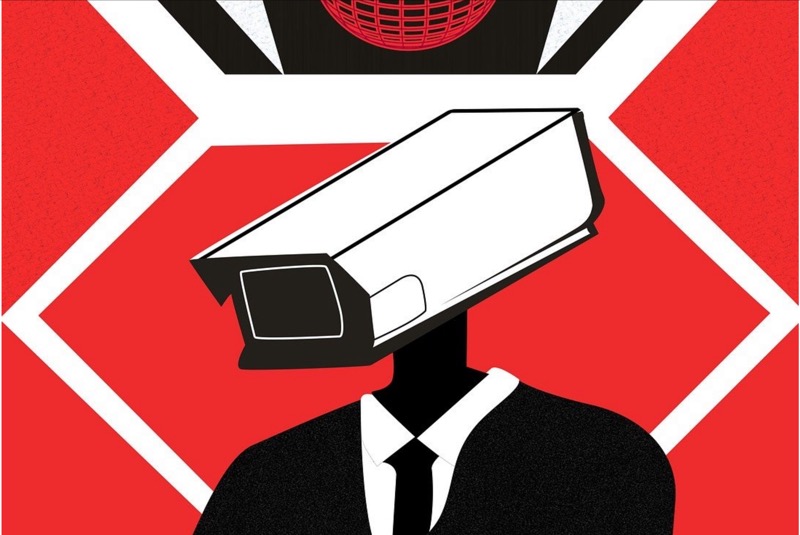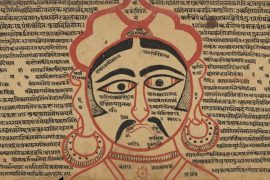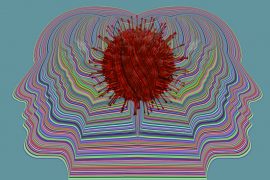If only two letters of the English alphabet were to be used to capture the fashion and hype of the third decade of the twenty-first century, they would be A and I. Thanks to the internet and social media, most of us have experienced, directly or indirectly, the power of both real AI and metaphoric AI, namely the “Advertisement of Ideology.”
AI is not easy to define given the preponderance of acronyms: GAI or generative AI; AGI or artificial general intelligence; LLM, LLaM or large language model, etc. Two quotes may be a good place to begin with as they show how AI is a technology where the confluence of politics and profit, both globally and in the Indian context, is most apparent.
The first quote is taken from what the Prime Minister said in June 2023 during his state visit to the USA and his joint address to Congress: “The future is AI – America and India.” The second is from two AI experts, both of whom were sacked by Google for publishing a paper that pointed out how AI can be used to promote toxic ideology. According to them, GPT-3, an early LLM, gave outputs that were “filled with prejudicial, hateful text mimicking the toxicity of the internet toward certain groups.”
Both these quotes illustrate the deep socio-political dimensions of AI and its many avatars. Basically, like all modern technologies, they all have benefits and risks associated with them. The balance between the two depends on who uses it, for what purpose, and the specific societal context.
All forms of AI can sieve and analyse huge amounts of stored data in a very short time. AI seeks patterns and correlations in such data, much of which is often personal. Based on the findings, it can produce a summary report, generate new data, and add or subtract a video or audio recording. Search engines like Google and Bing are early examples of AI-aided internet search. Currently, AI is mainly used in marketing, law enforcement, hospital services, and other areas.
The origin of AI could be traced back to that of ARPANET, a program funded in the 1960s by the USA’s Defense Advanced Research Projects Agency (DARPA). Not surprisingly, in recent times, AI has been increasingly used in direct defence-related applications. In both Ukraine and Gaza, it has been used for what are called “targeted attacks.”
Such AI systems are far from foolproof. In Gaza, the use of AI targeting systems such as “Lavender” and “Gospel,” instead of keeping the numbers of innocent civilians killed at a minimum, increased them many times. It is these military applications, however, that make AI a strategic area of interest for many countries.
In the civilian sector, recent advances in AI have been driven by profit. ChatGPT, one of the first large language model (LLM) based AI, was invented by OpenAI, a company heavily sponsored by Microsoft. OpenAI started as a non-profit organisation in 2015 but adopted a “capped profit” model in 2019.
It was catapulted to fame after the release of ChatGPT in 2022. This led to the drama when, in November 2023, OpenAI’s CEO Sam Altman was sacked and then reappointed within five days with the constitution of a new board. The transition from “non-profit” to “capped profit” and Microsoft’s direct intervention to reinstate Altman triggered the race for market dominance between the internet giants Google, Microsoft, Amazon, Meta, etc. (Do read the article in Nature, Vol 623, 30 November 2023, p898)
From a business point of view, the obvious question is what the future demand for AI services will be like. A well-researched, recent report summed it up well and concluded that it is far from rosy. It said: “The AI obsessed bosses are about to get a rude awakening.” Another report pointed out the considerable legal challenges from the governments that the giant tech companies must deal with.
In the political sphere, the use of computers has a fascinating history. An IBM 704 machine, a primitive form of AI, was used as far back as 1962 in the US presidential election campaign. Predictably, the targeted election campaigning based on the voters’ personal data contributed to the outcome of the closely-fought election. ( Do read Jill Lepore’s article in Nature, Vol 585, 17 September 2020, p348)
More than half a century later, its power to sway elections was apparent once again in 2016, when the use of personal data in targeted campaigning contributed to Donald Trump’s victory. Facebook and Cambridge Analytica were the two companies that did it, and they never sought the consent of the individuals concerned. Consequently, Facebook had to pay penalties for violating privacy, and Cambridge Analytica went defunct.
The Internet became a major platform for election campaigning in the Indian general election in 2014. Social media-aided propaganda, especially among the youth, contributed significantly to the BJP’s win in 2014. Ten years later, the massive progress in digital technology was obvious. Generative, AI-created deep fakes were abundant during the campaigning phase of the 2024 elections.
The voice of the actor Aamir Khan, the video shots of Narendra Modi grooving to a Bollywood song, and Mamata Banerjee dancing in a saree-like outfit are a few media-reported examples. Less talked about but far more insidious was the approval by Meta, the owner of Facebook and Instagram, of political advertisements that had the potential to incite religious violence. This was precisely the kind of threat that Gebru and Mitchell, the two ex-Google AI experts mentioned earlier, had warned us about.
The U.S.-India initiative on Critical and Emerging Technology (iCET) was launched in January 2023. The laundry list of key technology sectors included diverse areas such as biotechnology, AI, clean energy, etc. As mentioned earlier, the PM’s political spin on AI as “America and India” was primarily to highlight this joint initiative. He discussed AI again in two follow-up meetings: the first with Bill Gates in March 2024 and the second with the media on the day before 19 April, when the general elections began.
Two days after polling started, there was a lengthy newspaper interview with the Principal Scientific Advisor (PSA) to the Indian Government, wherein catchphrases such as “deployment of breakthrough technologies”, “vision for 2047”, “8-10% or more economic growth” etc. were used.
The PSA may have talked about economic growth and India’s science and technology, but he forgot to add two simple facts. First, without jobs, economic growth is just a number and a cruel joke to the unemployed. Second, “breakthrough technologies”, in whatever shape or form, do not fall from the sky. To talk about them and self-reliance after being in power for ten years smacks of plain hypocrisy.
It is worth remembering that all the AI-related meetings, the S&T-related policy announcements and briefings took place a little before and during the polling season. It is reasonable, therefore, to conclude that these were part of an image-building exercise; they were to project individuals as visionary technocrats.
In his meeting with Bill Gates, the PM emphasised his commitment to a digitally inclusive India but said that AI should not become a tool for the lazy. What inclusiveness means, or who in India is lazy, was not elaborated upon. Surely, they are not the 1.6 million people in the unorganised sector who lost their jobs between 2015 and 2023 or the 3700 PhD holders and 28000 young postgraduate applicants who were among the 93000 applicants for 62 positions as peons in the Uttar Pradesh police department.
The BJP came to power in 2014 when the ill effects of trickle down economics and jobless growth – unemployment, the total absence of S&T-driven innovations in the manufacturing sector, rampant corruption, etc., were already much in evidence. Among the BJP’s many pre-election promises, creating tens of millions of jobs for the unemployed youth was a central one.
In the ten years that followed, the number of Indian dollar billionaires rocketed, as did the economic inequality. The unemployment problem went from bad to worse. The agricultural sector, in which a majority of the Indian people earn their livelihood, was not just ignored but had the ruling party trying to push the failed corporate-driven growth model down its throat. The farmers’ strike was the beginning of a remarkable pushback by the people against authoritarianism of a kind not seen before.
It was the authoritarianism of the state, backed to the hilt by the big corporates, the super-rich, and the mainstream media. Intoxicated with power, the BJP forgot that of the people who voted in the two general elections of 2014 and 2019, more than or equal to 63 per cent did not vote for them. In 2024, that fundamental social arithmetic number remained unchanged, but the opposition managed to put up the semblance of a united front to make the disillusionment of the farmers, unemployed, and ordinary citizens work in their favour.
The net result was that the BJP got approximately 5 million less votes and lost 63 seats. Projecting the PM as an AI-savvy technocrat and, at the same time, a messenger of God who had doubts about his biological origin did not help. Neither did the advertising of illusory promises titled “Modi Ki guarantee” on a massive scale, nor slogans such as “Sabka Saath Sabka Vikas.”
Over the seven phases of the 2024 elections, “Vikas” was mentioned increasingly less. In its place, divisive communal ranting was ramped up to an unprecedented level to show what “inclusiveness” and “Sabka” meant to the leadership and the party. Despite all that, people were not fooled, with the BJP, in fact, suffering a stunning defeat in the backyard of the PM’s “signature Hindu temple.”
However, no democracy, including the Indian variety, is self-correcting. The systemic vulnerabilities of democracies always arose from the hegemony of an ideology that commodified everything for profit. In the past, land, labour and money were turned into commodities, disembodied from society and left to the mercy of the “free market.” (Do read Karl Polanyi’s The Great Transformation: The Political and Economic Origins of our Time, 1944).
The net result was two World Wars, the rise of fascism, and two revolutions in the first half of the last century. In this century, data, including personal data, has been added to the list of commodities. AI’s many avatars have facilitated the process over the years. The enormous power that the Digital-Financial Complex (DFC) wields today results from that, but nobody knows how this will play out in the future.
In the Indian context, the hard economic problems of unemployment and extreme inequality cannot just be wished away. Their resolution will require a vision of development that lies outside the trap of corporate-led growth and crony capitalism. The continued reliance of politicians on this failed ideology, irrespective of their party affiliations, will almost certainly put social stability and Indian democracy’s future under serious threat.
-30-
Copyright©Madras Courier, All Rights Reserved. You may share using our article tools. Please don't cut articles from madrascourier.com and redistribute by email, post to the web, mobile phone or social media.Please send in your feed back and comments to [email protected]











